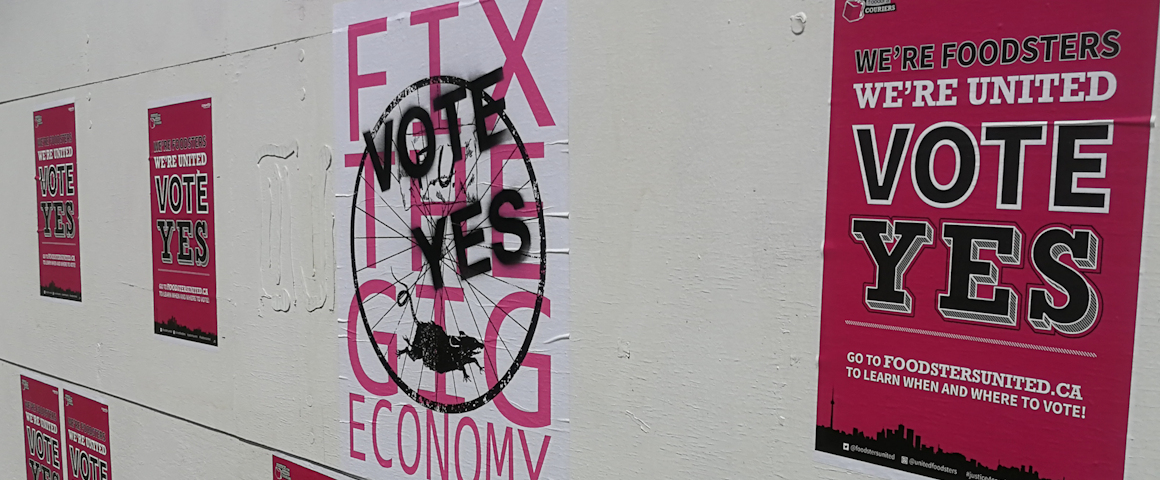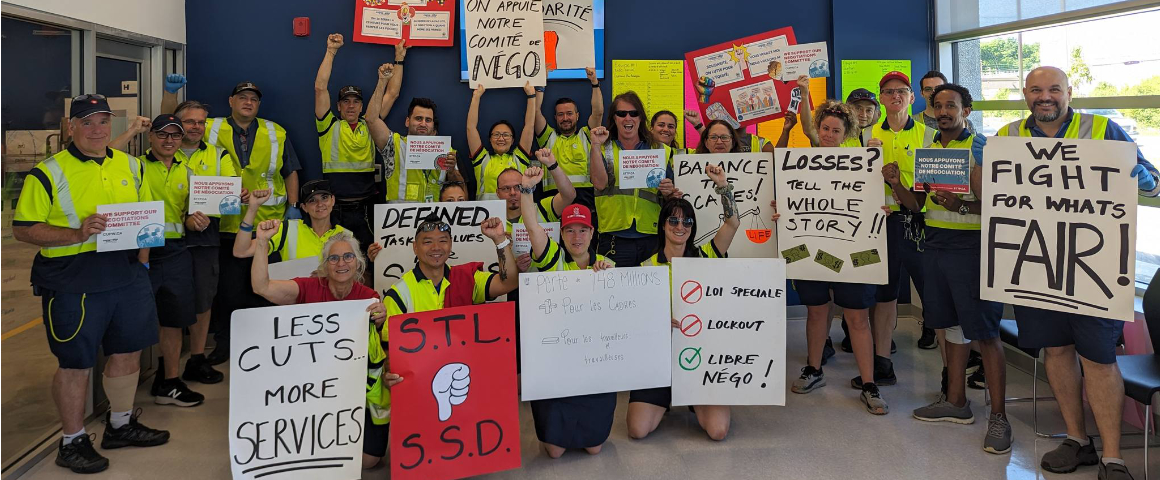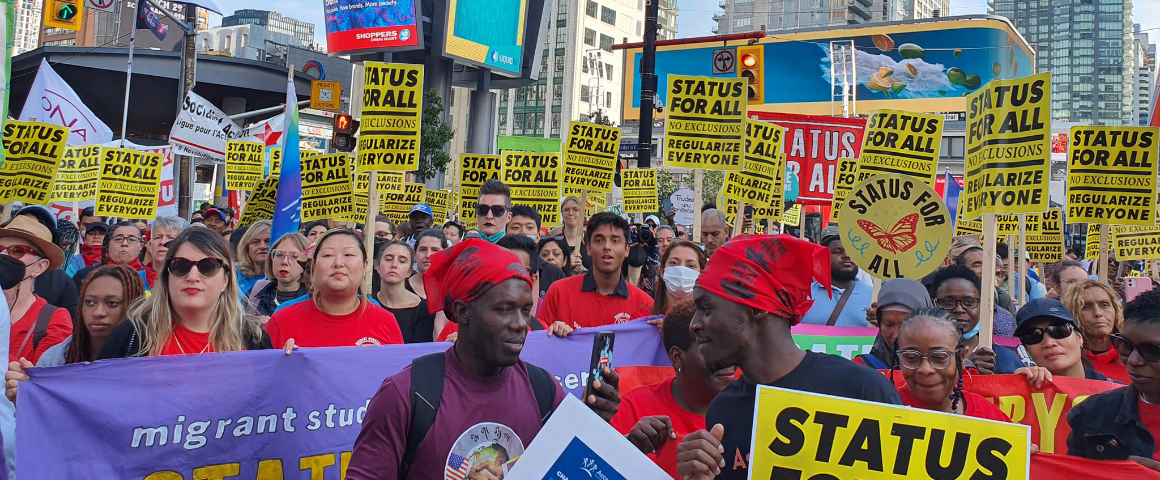Gig workers: A tale of two organizing strategies
PV Labour Bureau
The January 27 announcement that the United Food and Commercial Workers (UFCW) had struck a country-wide agreement with Uber Canada, under which the union would provide limited representation to workers requesting it, was greeted with surprise, concern and frustration from many quarters of the labour movement.
Among the most surprised would surely be the over 100,000 drivers and delivery people who are suddenly “covered” by this partnership that was cooked up behind closed doors by union and company representatives. Conceived and completed without any apparent worker to worker organizing campaign, the agreement is a version of “voluntary recognition” deals through which unions offer the employer guarantees of labour peace in exchange for recognition and buckets of dues money.
In this case, it appears that UFCW is using the partnership to secure limited recognition from Uber and a guarantee of the employer’s neutrality during possible organizing drives at some unspecified point in the future. The union is only able to intervene on a very limited range of issues, such as drivers who are delisted from the company’s platform, if the worker requests. UFCW says its “services” under the partnership will be offered free of charge to the workers, meaning it views the partnership as an “investment” from which it will be eager to see returns.
But the union is sacrificing a lot in the interim. The deal clearly avoids referring to Uber workers as employees – further cementing the bosses’ view that they are independent contractors and ineligible for unionization. Furthermore, it jettisons the union as an organization of workers and positions it as a part-time service provider to workers who have no seat at the table – in effect, the union will become a branch of the company’s Human Resources office. This is business unionism at its worst.
The UFCW-Uber deal brings back bad memories of the “Framework of Fairness” pact that CAW (now UNIFOR) signed in 2007 with auto parts giant Magna International. That agreement was roundly criticized by the labour movement – including within CAW – as a knife into the union. The biggest cut was an unlimited no strike clause which cut the union’s legs before it could even stand, but which was the “gift that keeps on giving” for Magna. The framework deal also mandated lower wages and fewer benefits for new hires (“two-tiering”), removed local stewards and committees, and limited workers’ full and free participation in the union. The CAW had been known for its strong and effective shop floor organization and action, but the framework simply gutted the union and set worker against worker, and worker against the union.
At the time, CAW claimed the framework deal was the best way to bring 18,000 workers at 45 Magna plants across Canada into the labour movement. With this objective in mind, the Framework of Fairness was a colossal failure. Only three plants opted to join the union under the deal, and it seems to have been quietly shelved by CAW’s successor UNIFOR which subsequently organized another Magna plant outside of the framework.
While UFCW is doubtless tantalized by the prospect of winning up to 100,000 members, its deal with Uber is crafted from the same fantasy as CAW’s with Magna and is likely to crash on the same rocks.
But those 100,000 drivers and delivery people are workers and, just like the 18,000 workers at Magna, they need to be unionized. And in the current conditions in particular, unions do need to develop creative strategies for organizing and mobilizing workers to defend their rights and win gains.
So, if backroom deals with the boss is not the way to go, what is?
In 2019, Foodsters United (now called Gig Workers United) used a bold strategy, rooted in class struggle positions, to organize hundreds of Foodora delivery workers in Toronto. With no centralized workplace, outreach was street-based and literally every worker had to be approached to become an organizer. With support and resources from the Canadian Union of Postal Workers (CUPW) support and resources, the couriers themselves developed each aspect of the campaign, through trial and error. As one organizer told People’s Voice, “It’s not a case of the union showing up and taking over. This is one hundred percent courier-led.”
Along the way, CUPW fought in the courts for the workers’ right to unionize – as with Uber, Foodora argued they were independent contractors. Foodsters United launched their drive at the end of 2018 and filed to certify hundreds of couriers in the summer of 2019, with 88.8 percent voting in favour of the union. While the victory ended on a bittersweet note when Foodora closed its operations throughout Canada, it was a tremendous win for the labour movement, based on a campaign that actively engaged a huge number of workers through continuous organizing.
Temporary and precarious employment is nothing new to capitalism – in their pursuit of profit, bosses have constantly looked for ways to maximize “flexibility” in the workplace. Of course, flexibility for the boss means instability, stress and poverty for the worker.
However, while not new, precarious employment has quickly expanded in the past 15 years, as capitalism has faced a series of sharpening contradictions and deepening crises. The gig economy – which rushed in with a carefully marketed message of flexible scheduling for workers who could make easy money on their own time – is part of expansion, which has accelerated during the pandemic.
Gig work has grown rapidly in Canada, increasing from 8.2 percent of the workforce in 2016 to 13 percent in 2021, and over 37 percent of businesses in the country currently employ gig workers. These are not small companies – most are commercial enterprises with between $10 million and $100 million in annual business. This is a significant section of the capitalist class, so when they argue that gig workers are contractors, not employees, and that this status makes them ineligible to unionize, governments and the courts tend to sympathize with the bosses.
Notably, just one week after the UFCW-Uber announcement, Ontario’s Conservative government announced sweeping plans to normalize and institutionalize the gig economy. The Tories’ latest gift bag to capital includes creating a new “dependent contractor” category for workers, which would ensure that gig workers remain outside of the trade union movement and far less able to organize and collectively struggle for their rights. The language, scope and apparent intent of the UFCW-Uber partnership are completely reflective of the Ontario government’s approach.
Faced with this kind of powerful foe, the labour movement needs to take a clear class struggle approach to organizing gig workers. That approach begins with seeing them as workers – not as “independent contractors” or “service providers” – and fighting for their full labour rights, not some fake category invented by the bosses. It means putting them at the centre of any organizing campaign, not cutting backroom deals in company boardrooms.
This is the approach demonstrated by CUPW and Gig Workers United, and it is the one that will build the labour movement and win real gains for workers. It’s ironic – and, for the workers involved, very bitterly so – that this strategy was showing real success and gaining momentum at the very moment that UFCW cut its deal with Uber.
What’s the role of the Canadian Labour Congress in all of this?
Union organizing has generally been viewed as the purview of the individual affiliates, sometimes in a very parochial manner. But the labour movement is often strongest when there is one union per industry – the resulting concentration, expertise and organizational unity typically provide workers with a level of power that is greater than the sum of their numbers. If the labour movement is plagued by raiding or other types of competition for the same members, the only guarantees are disunity, weakness and a drive for the lowest common denominator for wages, pensions and working conditions. This is precisely why the left in the labour movement pressed hard for a disciplined, principled approach to organizing.
The CLC has an important role to play in promoting strong organizing strategies for the entire trade union movement. With unionization rates falling – from nearly 38 percent in 1981 to just over 31 percent now, and with the biggest decline in the private sector – and with employers and governments teaming up to cut back on workers’ rights and gains, workers need to be organized with unions that are willing and able to fight for their interests. That means taking on the companies, not transforming themselves into dues collection agencies in the pockets of the bosses.
The stakes are far too high for anything less.
[hr gap=”10″]
Get People’s Voice delivered to your door or inbox!
If you found this article useful, please consider subscribing to People’s Voice.
We are 100% reader-supported, with no corporate or government funding.




